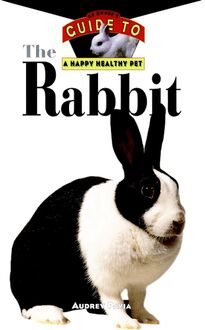-
 Univers
Univers
-
 Ebooks
Ebooks
-
 Livres audio
Livres audio
-
 Presse
Presse
-
 Podcasts
Podcasts
-
 BD
BD
-
 Documents
Documents
-
- Cours
- Révisions
- Ressources pédagogiques
- Sciences de l’éducation
- Manuels scolaires
- Langues
- Travaux de classe
- Annales de BEP
- Etudes supérieures
- Maternelle et primaire
- Fiches de lecture
- Orientation scolaire
- Méthodologie
- Corrigés de devoir
- Annales d’examens et concours
- Annales du bac
- Annales du brevet
- Rapports de stage
La lecture à portée de main
Vous pourrez modifier la taille du texte de cet ouvrage
Découvre YouScribe en t'inscrivant gratuitement
Je m'inscrisDécouvre YouScribe en t'inscrivant gratuitement
Je m'inscrisEn savoir plus
Vous pourrez modifier la taille du texte de cet ouvrage
En savoir plus

Description
The Dalmatian offers:
* Completely up-to-date resources, including top Web sites of interest to Dalmatian owners
* Expert advice from Dr. Ian Dunbar, internationally renowned animal behaviorist
* An introduction to the exciting world of dog sports from Bardi McLennan, Dog Fancy magazine columnist
* Quick access to everything you need to know about the health and well-being of your Dalmatian
* Full-color photographs of Dalmatians from puppyhood to adulthood and the golden years
PART ONE: Welcome to the World of the Dalmatian.
1. What Is a Dalmatian?
2. The Dalmatian's Ancestry.
3. The World According to the Dalmatian.
PART TWO: Living with a Dalmatian.
4. Bringing Your Dalmatian Home.
5. Feeding Your Dalmatian.
6. Grooming Your Dalmatian.
7. Keeping Your Dalmatian Healthy.
PART THREE: Enjoying Your Dog.
8. Basic Training (Ian Dunbar, Ph.D., MRCVS).
9. Getting Active with Your Dog (Bardi McLennan).
10. Your Dog and Your Family (Bardi McLennan).
11. Your Dog and Your Community (Bardi McLennan).
PART FOUR: Beyond the Basics.
12. Recommended Reading.
13. Resources.
Sujets
Informations
| Publié par | Turner Publishing Company |
| Date de parution | 31 août 2007 |
| Nombre de lectures | 0 |
| EAN13 | 9780470252789 |
| Langue | English |
| Poids de l'ouvrage | 1 Mo |
Informations légales : prix de location à la page 0,0898€. Cette information est donnée uniquement à titre indicatif conformément à la législation en vigueur.
Extrait
The Dalmatian
Howell Book House
Howell Book House
A Simon Schuster Macmillan Company
1633 Broadway
New York, NYl0019
Copyright 1995 by Howell Book House
All rights reserved. No part of this book may be reproduced or transmitted in any form or by any means, electronic or mechanical, including photocopying, recording, or by any information storage and retrieval system, without permission in writing from the Publisher.
MACMILLAN is a registered trademark of Macmillan, Inc.
Library of Congress Cataloging-in-Publication Data
Strand, Patti.
The dalmatian: an owner s guide to a happy, healthy pet/Patti and Rod Strand.
p. cm.
Includes bibliographical references.
ISBN: 0-87605-384-3
1. Dalmatian dog. I. Strand, Rod. II. Title
SF429.D3S88 1995
636.7 2-dc20 95-21234
CIP
Manufactured in the United States of America
10 9 8 7 6 5 4 3 2 1
Series Director: Dominique De Vito
Series Assistant Director: Felice Primeau
Book Design: Michele Laseau
Cover Design: Iris Jeromnimon
Illustration: Jeff Yesh
Photography:
Cover photos by Pets by Paulette
Courtesy of the American Kennel Club: 20, 21, 23
Joan Balzarini: 96
Mary Bloom: 59, 96, 136, 145
Paulette Braun/Pets by Paulette: 2-3, 5, 11, 15, 16, 17, 22, 38, 44, 96
Buckinghamhill American Cocker Spaniels: 148
Callea Photo: 19, 30, 32, 45, 51, 53, 57, 58, 62, 63, 64, 79
Sian Cox: 134
Dr. Ian Dunbar: 98, 101, 103, 111, 116-117, 122, 123, 127
Dan Lyons: 27, 36-37, 62, 96
Cathy Merrithew: 129
Liz Palika: 133
Janice Raines: 132
Susan Rezy: 96-97
Patti Rod Strand: 24, 31, 43, 48, 72, 73
Judith Strom: 8, 29, 96, 107, 110,128, 130, 135,137,139,140, 144, 149, 150
Jean Wentworth: 40, 47, 75
Kerrin Winter Dale Churchill: 7
Production Team: Troy Barnes, John Carroll, Jama Carter,
Kathleen Caulfield, Trudy Coler, Victor Peterson, Terri Sheehan,
Marvin Van Tiem, Amy DeAngelis and Kathy Iwasaki
Contents
part one
Welcome to the World of the Dalmatian
1 What Is a Dalmatian?
2 The Dalmatian s Ancestry
3 The World According to the Dalmatian
part two
Living with a Dalmatian
4 Bringing Your Dalmatian Home
5 Feeding Your Dalmatian
6 Grooming Your Dalmatian
7 Keeping Your Dalmatian Healthy
part three
Enjoying Your Dog
8 Basic Training by Ian Dunbar, Ph.D., MRCVS
9 Getting Active with Your Dog by Bardi McLennan
10 Your Dog and Your Family by Bardi McLennan
11 Your Dog and Your Community by Bardi McLennan
part four
Beyond the Basics
12 Recommended Reading
13 Resources
chapter 1
What is a Dalmatian?
Curious about what a Dalmatian is? Go ahead, ask a hundred Dalmatian owners What is a Dalmatian? You ll get a hundred different answers. Some of the responses may have similar themes, but they unerringly lead to the conclusion that Dalmatians are, in a word, unique. The reasons people choose them?
Their ability to keep up with outdoor activities. (jogging, exercising or going on camping trips)
They re intelligent.
I use them for hunting.
They re gentle with children.
I compete with them. (in conformation, or obedience or agility trials)
Because they sit on your feet while you peel potatoes in the kitchen.
Because they work well with horses.
They re smart, alert protectors.
They really do smile.
They keep you on your toes.
Because they demand pats and affection and always give it back.
WHAT IS A BREED STANDARD?
A breed standard-a detailed description of an individual breed-is meant to portray the ideal specimen of that breed. This includes ideal structure, temperament, gait, type-all aspects of the dog. Because the standard describes an ideal specimen, it isn t based on any particular dog. It is a concept against which judges compare actual dogs and breeders strive to produce dogs. At a dog show, the dog that wins is the one that comes closest, in the judge s opinion, to the standard for its breed. Breed standards are written by the breed parent clubs, the national organizations formed to oversee the well-being of the breed. They are voted on and approved by the members of the parent clubs.
They seem to be able to choose my friends better than I can.
The list goes on and on and on. Dalmatians are magicians, successfully adapting to a wide range of owners lifestyles-from high-energy activities to porch rocking. Their uniqueness, as observed by each owner, stems from their attentiveness to, and preference for, human companionship. Despite their athleticism and ability to be on the go all day long, they d really like nothing better than to be with their owners. They don t like hunting more than they like their owners. They don t like retrieving more than they like their owners. They don t like chasing rabbits or digging for moles or playing with other dogs more than they like their owners. They are decidedly people dogs.
The Same, but Different
Aside from the unique relationships they develop with their owners, though, they re all the same, right? Well, not exactly. Granted, they are dogs with black or liver (dark brown) spots on white coats; are medium-sized, weighing about 45-65 pounds and measuring 19 to 24 inches in height at the withers. But to leave it at that is like saying that all cars are the same because they have four wheels and an engine. If you look closer, individual Dalmatians vary in looks as much as individual humans do. For instance, if you go to Russia or France or Australia, Dalmatians will look surprisingly different in each of those countries, and they will vary in looks from those found in the United States. And within the United States, Dalmatians have distinctly different features, too.
One way Dalmatians keep looking like Dalmatians is through the use of the American Kennel Club registry system and adherence by breeders to a written breed standard. This standard is maintained-and adjusted from time to time-by Dalmatian breeders who are members of an AKC-recognized parent club for the breed. This form of association (the AKC as a registry that also recognizes one national club which protects and promotes the interests of each specific breed) enables breeders of all dogs to compare their breeding efforts to a written description of a perfect example of what a dog of the breed should look like, how it should act and what it should be able to do.
Every Dalmatian is a unique individual-from his spots to his character.
This all sounds fairly straightforward and uncomplicated, but the complexity of genetics makes breeding the perfect dog about as easy as making an exact replica of a bowl of spaghetti, down to the precise placement of each knotted noodle, meatball and fleck of parmesan cheese-blindfolded. Actually, it could be argued that the spaghetti replication would be easier because you would be working from a physical model. A breed standard is written. Consider how frequently everyday conversations are misunderstood because of the many different meanings words can have and you will realize why the standard has nearly as many different interpretations as there are breeders in the country.
In fact, you can see this diversity for yourself. If you go to the annual Dalmatian national specialty show and look closely, you can see marked differences in weight, size, shape, symmetry, expression, movement, body tone, coat condition, eye color, dentition and, yes, spots. You will most certainly see 400 to 700 exquisite Dalmatians at a national because competition is fierce-but you will also find vast individual differences. And within these differences lies one of the keys to the popularity of dog shows. Each variation you see among the animal entrants represents a different interpretation-a different idea if you will-of the breed standard and what a Dalmatian should be. Almost every breeder/exhibitor at the show thinks his or her Dalmatian is a better than average representation of the breed standard (and maybe even really the best one there!). It s also a certainty that each breeder and exhibitor at the show feels that his or her Dal is the most unique and lovable one at the show.
Alertness is part of the Dalmatian s general appearance.
Studying the Standard
For someone who has not owned or bred a Dalmatian, the best way to get to know them is to read the standard while thinking of a dog that was bred to be a running escort for carriages and the people riding in them. Then go look at live examples at dog shows or wherever you can find them, and ask questions endlessly (you can do this if you confess that you re a wide-eyed novice-and you can get some interesting answers for comparison). In this book, you ll see why the Dalmatian has a notable affinity for horses and people. In terms of athleticism, you ll also discover that the Dal is more like a gymnast than a weighlifter or a football linebacker or a basketball or baseball player (even though he does scratch himself occasionally).
With this in mind, let s look at the standard. The general appearance emphasis on distinctive appearance, poise, alertness, lack of shyness and an intelligent expression relates directly to the Dal s human orientation and coach-dog duties. The Dal was selected with an emphasis on service and eye-catching appearance. He had to have the self-confidence to be among people, vehicles, horses and the clatter of the streets without losing composure or attention to its duty, which was to protect the horses and clear the path for safe and swift passage of the carriage. The beer wagon pictures you may see with the horses charging and the spotted Bowser sitting next to the driver aren t exactly what the original breeders had in mind. No, the Dal was bred to work tirelessly at the side, front, back or underneath the carriage, clearing the road. He had to have enough intelligence to make decisions on his own about what did or did not constitute an obstacle to the carriage s progress, and he had to have the ability to do whatever it took to get rid of the obstacles. He had to do this while runn
-
 Univers
Univers
-
 Ebooks
Ebooks
-
 Livres audio
Livres audio
-
 Presse
Presse
-
 Podcasts
Podcasts
-
 BD
BD
-
 Documents
Documents
-
Jeunesse
-
Littérature
-
Ressources professionnelles
-
Santé et bien-être
-
Savoirs
-
Education
-
Loisirs et hobbies
-
Art, musique et cinéma
-
Actualité et débat de société
-
Jeunesse
-
Littérature
-
Ressources professionnelles
-
Santé et bien-être
-
Savoirs
-
Education
-
Loisirs et hobbies
-
Art, musique et cinéma
-
Actualité et débat de société
-
Actualités
-
Lifestyle
-
Presse jeunesse
-
Presse professionnelle
-
Pratique
-
Presse sportive
-
Presse internationale
-
Culture & Médias
-
Action et Aventures
-
Science-fiction et Fantasy
-
Société
-
Jeunesse
-
Littérature
-
Ressources professionnelles
-
Santé et bien-être
-
Savoirs
-
Education
-
Loisirs et hobbies
-
Art, musique et cinéma
-
Actualité et débat de société
- Cours
- Révisions
- Ressources pédagogiques
- Sciences de l’éducation
- Manuels scolaires
- Langues
- Travaux de classe
- Annales de BEP
- Etudes supérieures
- Maternelle et primaire
- Fiches de lecture
- Orientation scolaire
- Méthodologie
- Corrigés de devoir
- Annales d’examens et concours
- Annales du bac
- Annales du brevet
- Rapports de stage




















